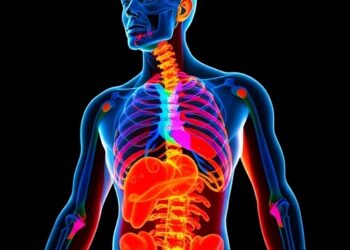A new computational method developed by physicists at Tampere University can be used to estimate the risk of sudden cardiac death from a one-minute heart rate measurement at rest. The study was carried out in interdisciplinary collaboration between cardiology and computational physics.
A new computational method developed by physicists at Tampere University can be used to estimate the risk of sudden cardiac death from a one-minute heart rate measurement at rest. The study was carried out in interdisciplinary collaboration between cardiology and computational physics.
Unfortunately, the first symptom of heart disease is often sudden cardiac death. It can also occur in a young and outwardly healthy person, for example, in connection with strenuous sports.
To organise preventive treatment, it is extremely important to be able to determine the risk of sudden death. Consumer devices that measure heart rate, such as commonly used smart watches, have the technical prerequisites to determine such cardiac risk factors. However, the heart rate interval analyses used thus far have not been accurate enough for this purpose.
In previous studies, the risk of sudden death has been assessed using parameters measured during a stress test, such cardiorespiratory fitness and recovery heart rate tests. Cardiorespiratory fitness refers to a person’s ability to transport oxygen to muscles and the capacity of muscle tissue to use oxygen during physical activity.
Tampere University’s researchers found that the new computational method they developed provides a significantly better estimate of the long-term risk of sudden death. Making the assessment only requires heartbeat intervals measured during one minute at rest. The finding is based on stress test data collected by the Finnish Cardiovascular Study (FINCAVAS) project from approximately 4,000 patients.
Patients with abnormal heart rate variability identified with the new method had a significantly higher incidence of sudden death compared to patients with normal heart rate characteristics. Other risk factors were also taken into account in the analysis.
The method has great potential for pre-diagnosis and the identification of high-risk patients. The method is not dependent on other measurements and could be straightforwardly integrated into, for example, a smart watch or smart ring.
“It is possible that in many previously asymptomatic individuals, who have suffered sudden cardiac death or who have been resuscitated after sudden cardiac arrest, the event would have been predictable and preventable if the emergence of risk factors had been detected in time,” says Jussi Hernesniemi, Professor of Cardiology and lead author of the study.
The new method is based on time series analysis developed by a computational physics research group led by Professor Esa Räsänen. The analysis can be used to study the interdependencies of heart rate intervals and other complex properties characteristic of different heart diseases at different time scales.
“The most interesting finding of the study is the identification of differences specifically during measurements at rest. The characteristics of heart rate intervals of high-risk patients at rest resemble those of a healthy heart during physical exertion,” says doctoral researcher Teemu Pukkila.
The development and research of the method is currently being expanded and continued with the help of databases on different heart diseases. The aim is to reliably identify not only the overall risk but also the most common heart diseases, such as heart failure, which are quite laborious to diagnose with current methods. The initial results are very promising.
The findings were published in the prestigious JACC: Clinical Electrophysiology journal on 12 June 2024. (
Journal
JACC Clinical Electrophysiology
Article Title
Prediction of Sudden Cardiac Death With Ultra-Short-Term Heart Rate Fluctuations
Article Publication Date
12-Jun-2024




